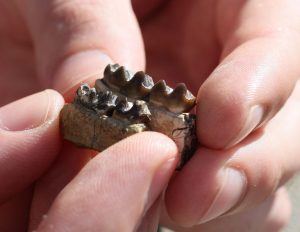
Fifty-six million years ago the Earth underwent a dramatic warming event, with temperatures increasing by as much as 7° Celsius over a span of just 100,000 years. Many mammals responded to this temperature increase by becoming much smaller. How these changes happened, however, is poorly understood. Identifying and measuring the mechanisms that drove these changes was the focus of a new study by University of California Museum of Paleontology researchers Brian Rankin and Pat Holroyd, and colleagues from University of Calgary and Western University of Health Sciences.
Lead author Brian Rankin, the newest postdoctoral scholar of University of California Museum of Paleontology, explains “When temperatures get warmer, we see a wide range of mammals become smaller. Determining what evolutionary processes are responsible for these changes and how much each contribute to this pattern has been very uncertain. We chose the evolution of mammals at the Paleocene-Eocene boundary because it is a time of dramatic global warming when many different types of animals became dwarfed and the fossil record of this time is incredibly rich.”
In a new paper published in Proceedings of the Royal Society B, these researchers present a new method to separate and quantify body size change due to selective extinction vs. change within lineages to determine which is the most important way in which evolution takes place during times of global warming. They found that that some evolutionary mechanisms (i.e., species selection) might act differently during global warming events, favoring mammals that increase in size rather than decrease. The methods developed in the paper can now be broadly applied to look at evolutionary change during other times of global change.